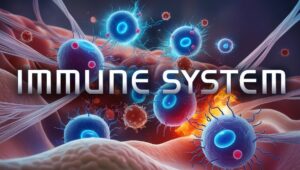Proteomics is a rapidly advancing field that promises to revolutionize our understanding of life at the molecular level. Proteins, the workhorses of our cells, are responsible for a vast array of essential functions, from structural support to catalyzing chemical reactions. By studying proteins in a comprehensive manner, proteomics aims to shed light on the intricate web of interactions and pathways that govern the behavior of living organisms.
Think of it as the grand detective story of biology, where proteins are the suspects. It’s about figuring out who these protein characters are, what they do, and how they interact to keep life’s complex play going.
What is a Protein, Anyway?
Before we dive into the exciting world of proteomics, let’s quickly recap what proteins actually are. Imagine them as complex, intricate puzzles made up of smaller pieces called amino acids. These amino acids are linked together in specific sequences, forming chains that twist and turn into unique 3D shapes. It’s these shapes that determine what a protein does.
Why Study Proteins?
So, why do we care about these tiny puzzle pieces? Well, proteins are involved in almost every biological process imaginable. They’re the architects building our bodies, the chefs cooking up our energy, the soldiers defending us from invaders, and the messengers coordinating our actions. Understanding proteins is like having a backstage pass to the grand performance of life.
What is Proteomics and Why is it Important?
Proteomics is the large-scale study of proteins, their structures, functions, and interactions. It encompasses a wide range of techniques, from protein separation and identification to the analysis of post-translational modifications and protein-protein interactions. The importance of proteomics lies in its ability to provide a more accurate and dynamic picture of cellular processes compared to genomics alone. By studying proteins directly, researchers can gain insights into the actual molecules responsible for carrying out the instructions encoded in our DNA.
How Does Proteomics Work?
Proteomics typically involves the following steps:
- Sample preparation: Proteins are extracted from cells or tissues and prepared for analysis.
- Protein separation: Techniques such as two-dimensional gel electrophoresis (2D-PAGE) or liquid chromatography (LC) are used to separate proteins based on their properties, such as size, charge, or hydrophobicity.
- Protein identification: Mass spectrometry (MS) is the most powerful tool for identifying proteins. Proteins are digested into peptides, which are then analyzed by MS to determine their amino acid sequences and identify the corresponding proteins.
- Data analysis: Bioinformatics tools are used to process the vast amounts of data generated by proteomics experiments and to identify patterns, interactions, and potential biomarkers.
How do Scientists Actually Study Proteins?
Studying proteins is no walk in the park. It’s more like trying to assemble a jigsaw puzzle while blindfolded and wearing oven mitts. But fear not! Scientists have developed some pretty nifty tools to tackle this challenge.
One popular method is mass spectrometry. Think of it as a high-tech scale for molecules. Scientists use it to weigh proteins and figure out their composition. It’s like being able to tell exactly what ingredients are in your grandma’s secret recipe just by weighing the finished dish.
Another approach is protein microarrays. Imagine a tiny chip with thousands of different proteins stuck to it. Scientists can use these chips to see which proteins interact with each other or with other molecules. It’s like setting up a speed-dating event for proteins and seeing who hits it off.
What Can Proteomics Tell Us?
Proteomics has the potential to revolutionize our understanding of biology and medicine. Here are just a few examples:
- Disease diagnosis and treatment: By identifying changes in protein levels or structure, scientists can develop new diagnostic tools and targeted therapies.
- Drug discovery: Understanding protein function can help researchers design drugs that interfere with specific disease-related proteins.
- Agriculture: Proteomics can be used to improve crop yields and develop more nutritious foods.
- Food science: Studying the proteins in food can help us understand its nutritional value and allergenicity.
Can Proteomics Help Us Develop Better Drugs?
You bet your bottom dollar it can! Proteomics is revolutionizing drug discovery. By understanding how proteins interact and function, scientists can design drugs that target specific proteins involved in diseases.
Imagine you’re trying to stop a leaky faucet. You could flood the entire bathroom (like some traditional drugs do), or you could use a wrench to tighten the specific bolt that’s causing the leak (like targeted drugs developed through proteomics).
This targeted approach can lead to more effective treatments with fewer side effects. It’s like being able to eat all the ice cream you want without getting brain freeze or a stomachache. (If only proteomics could make that a reality!)
Challenges and Future Directions of Proteomics
While proteomics has made significant strides in recent years, there are still many challenges to overcome:
- Complexity of the proteome: The proteome is much more complex and dynamic than the genome, with proteins undergoing various post-translational modifications and participating in complex interactions.
- Sensitivity and resolution: Current proteomics techniques still struggle to detect and quantify low-abundance proteins and to achieve the same level of sensitivity and resolution as genomics methods.
- Integration with other -omics: To fully understand biological systems, proteomics needs to be integrated with other -omics approaches, such as genomics, transcriptomics, and metabolomics, which presents significant computational and analytical challenges.
Despite these challenges, the future of proteomics looks bright. Advances in mass spectrometry, bioinformatics, and other technologies are expected to continue to drive progress in the field.
One exciting development is single-cell proteomics. This allows scientists to study the proteins in individual cells, rather than averaging across many cells. It’s like being able to listen to each instrument in an orchestra separately, instead of just hearing the overall symphony.
Another promising area is structural proteomics, which aims to determine the 3D structures of all proteins in an organism. This could revolutionize our understanding of protein function and drug design. It’s like going from having a list of parts for a complex machine to having a detailed 3D blueprint.
What is Single Cell Proteomics?
Single cell proteomics is like having a tiny microphone for each cell in your body. Instead of looking at the average protein levels across millions of cells, we can now peek into individual cells and see what they’re up to.
This is revolutionary because cells, even those that look identical, can behave very differently. It’s like realizing that in a crowd of seemingly identical twins, each person actually has their own unique personality and job.
For example, in cancer research, single cell proteomics can help identify the rebel cells that are resisting treatment. It’s like being able to pick out the troublemakers in a massive crowd.
What is Spatial Proteomics?
Spatial proteomics is all about understanding where proteins hang out in the cell. It’s like creating a 3D map of a city, but instead of buildings, you’re mapping proteins.
This is crucial because a protein’s location can tell us a lot about its function. For instance, if a protein that’s usually found in the nucleus suddenly shows up in the cell membrane, it might be a sign that something’s gone awry.
Techniques like MALDI imaging and multiplexed ion beam imaging are allowing researchers to see proteins in their natural cellular habitats. It’s like having x-ray vision into the cellular world!
What is Shotgun Proteomics?
Despite its violent-sounding name, shotgun proteomics doesn’t involve any actual firearms. Instead, it’s a method where proteins are broken up into smaller pieces (peptides) and then analyzed.
It’s called “shotgun” because it’s a bit like firing a shotgun at a protein and then trying to figure out what the protein was by looking at the pieces. This might sound counterintuitive (why break something you’re trying to study?), but it actually allows researchers to identify and quantify thousands of proteins in a complex mixture.
What is TMT Proteomics?
TMT, or Tandem Mass Tag proteomics, is indeed a secret sauce in the world of protein research. It’s a way to compare protein levels across multiple samples simultaneously.
Here’s how it works: Imagine you have a bunch of different colored stickers, and you put a different color on proteins from each sample. Then you mix all the samples together and analyze them. The color tells you which sample each protein came from, and the brightness tells you how much of that protein was there.
This technique is super useful for comparing healthy vs. diseased samples, or for tracking changes over time. It’s like being able to watch a time-lapse video of your proteins as they respond to different conditions.
In conclusion, proteomics is unraveling the mysteries of life one protein at a time. From developing life-saving drugs to personalizing medical treatments, this field is protein-packed with potential.






